08 Sep Guide to Massage
A guide to the different types of massage and how they can help you
Massage is a form of alternative medicine in which physical contact is made with the muscles and other internal body tissues with the aim of promoting good health, reducing stress, relieving pain or calming some medical conditions. Massage has an ancient origin, but since the late 19th century, massage has been used as a complementary treatment for some forms of Western medicine.
Massages are usually performed by trained masseurs who may work either privately on clients or for health spas or clinic. They are normally carried out on a firm padded table without oil (as opposed to Swedish massage). The client wears shorts, pants or trunks and lies face down while the therapist delivers various strokes and manipulations mainly to relax but also to relieve muscle tension. These strokes can vary from light to deep and may include pulling, kneading of the muscles, friction across the grain of muscles, vibration or shaking. Deep-tissue massages work to relieve muscle tension and pain caused by the overuse of certain muscles in the body.
Massage has a long history with evidence of its use dating back thousands of years. It is thought that as long ago as 4500 BC massage was being practised on patients in India for medical purposes. The practice then spread into China where it became an important part of people’s lives up until the beginning of the 20th century when western practices began influencing Chinese medicine. In ancient China physicians used massage as a treatment for some conditions but primarily a means to promote good health. During the first millennium BC in ancient Greece and Rome, massage was also used as a treatment for health problems.
During the 19th century, massage began to be associated with erotic practices. In 1836 an article about “the Swedish Movement Cure” was published in a U.S. medical journal which complained that the lay public had an excessive belief in its powers of curing disease and insisted that it should be administered only by properly trained professionals. Within 20 years professional training schools were established throughout Europe and North America. At the beginning of the twentieth century, both physical therapists and physicians began using massage therapy as part of their treatment plans for patients who suffered from various health conditions which they believed to originate from the abnormal circulation of blood, impaired function of muscles or nerves
What is Swedish massage?
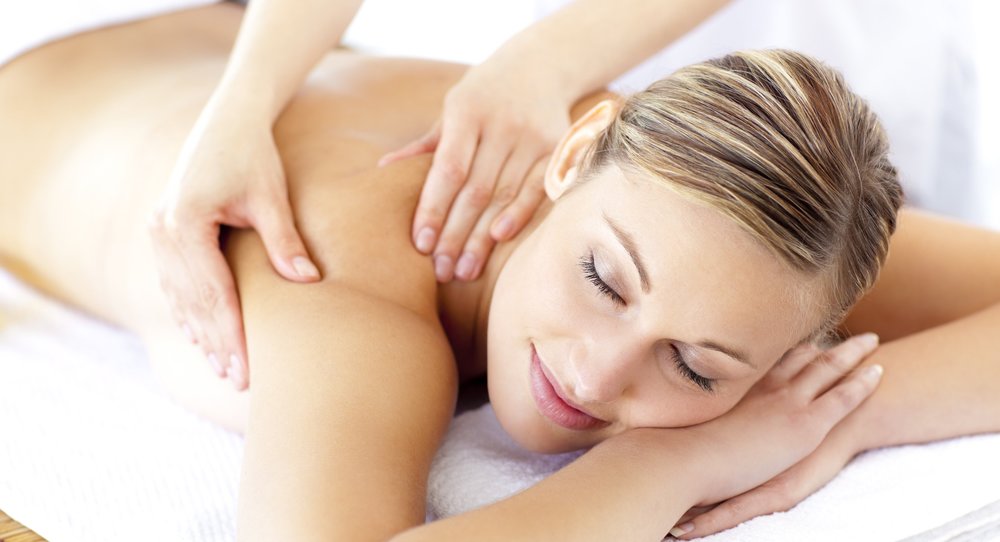
Swedish massage is one of the most popular types of massage. It was first developed by a Swedish medical student named Per Henrik Ling in 1813, partly as a way to help rehabilitate patients after surgery. Today, it’s used as both a relaxation technique and for treatment and prevention of certain conditions.
Swedish massages uses five styles of long strokes and one style of circular motions performed with the fingers, hands, forearms or elbows. Each style has specific benefits that can range from stress reduction to improved circulation. Usually you’ll need at least an hour session, but 75-90 minutes is recommended for maximum results – especially if you’re suffering from a chronic condition such as arthritis or lingering muscle problems.
As part of your massage, you’ll be asked to remove clothing that may get in the way or clothing that restricts movement (such as thick belts). During the session, the therapist’s hands typically glide along your back and limbs before focusing on pressure points. If you’re looking for a lighter touch, ask for “Swedish light” – but understand that even the lighter style is somewhat firm compared to other types of massages. You can also request firmer pressure throughout your session if anything feels particularly good.
It’s common for people to feel sleepy after their Swedish massage because it can relax muscles, reduce stress hormones and normalize heart rate and blood pressure levels. And while it may not leave you feeling limber right away, your flexibility will typically increase with each massage.
One of the greatest benefits of Swedish massage is that it doesn’t take much effort to get started – you don’t need any special equipment or clothing and all you need is one hour out of your day. You can receive this relaxing treatment at a spa, but many people also choose to do it at home because it’s so affordable and accessible. But before booking an appointment, be sure to check with your healthcare provider about whether Swedish massage is the right fit for your condition.
Swedish massage isn’t recommended during pregnancy or breastfeeding unless approved by your doctor, since there are some areas on the body where the fetus/baby is more vulnerable than others (such as directly over the uterus) and there’s an increased risk of miscarriage or harm if the therapist presses too hard.
What is Hot stone massage?
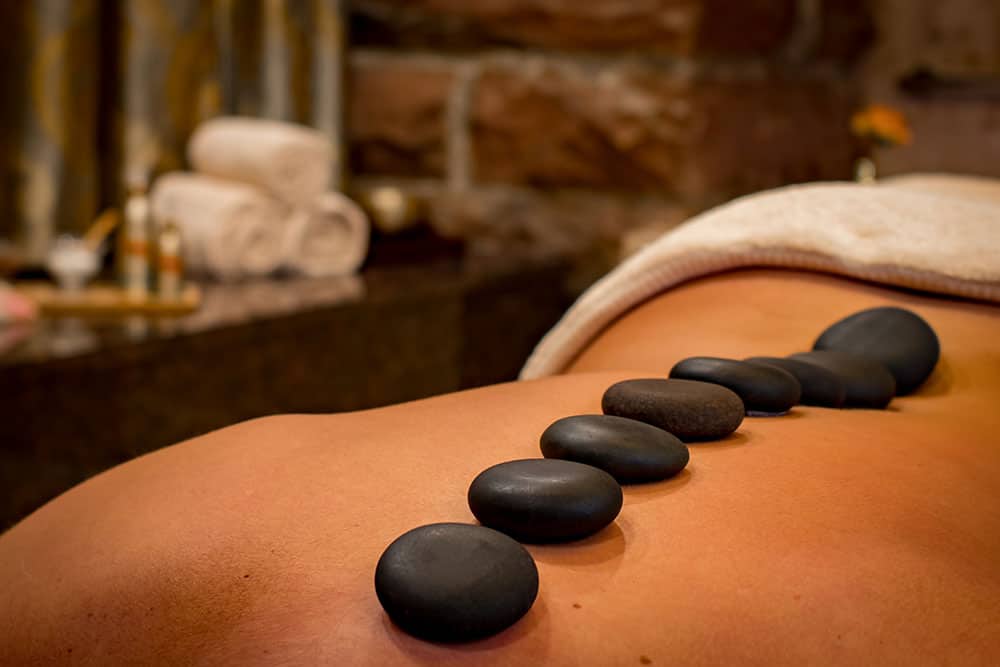
Hot stone massage uses the heat of smooth, dampened stones to warm up muscles and tissues. This increases circulation, which makes it a great way to promote healing in the body. It also helps reduce muscle tension for an overall relaxing experience that many clients love.
The hot stones are placed at key points on the body to help relieve pain or stress throughout the tissues. They can be used with deep tissue techniques to access specific problem areas, or simply placed gently across the surface of any area desired for relaxation purposes. Stones should always be handled carefully and with respect to avoiding burns or discomfort for sensitive skin areas like the face or other areas where bony prominences are near the surface. As you’ll see, regardless of the method used, hot stone massage always relies on stones to create a wonderful experience.
While some people think a combination of oils and heat is what makes a massage “hot”, this isn’t actually the case. With other types of massages that include heat as part of their practice, it’s usually from warm towels or heated lotion applied directly to the skin. In those cases, massage therapists use heat as an enhancement tool to help loosen up layers of muscle fibres before they begin giving the muscles deeper work with their hands.
Hot stone massage uses smooth, dampened stones – NOT heating elements – to achieve whole-body relaxation and comfort through strategically placed application at key points along your body’s energy lines. Stones are ideal for this purpose because they can retain heat for long periods of time to provide soothing comfort when used in combination with massage techniques.
Stones are chosen based on their ability to absorb and retain heat well without becoming too hot, so there’s no risk of getting burned during your session. Those who enjoy the heat will want to use stones that allow them to feel comfortable throughout the entire treatment, while still giving off enough warmth to relax muscles.
To give you an idea of how hot is “hot” when it comes to stone temperature, heated rocks used at spas typically measure somewhere between 120°F and 140°F (49°C – 60°C) just before they’re applied. You would not want any warmer than this or you risk injury to the tissues and muscles.
Warmer stones can be used on specific problem areas where deeper work is desired, but the therapist should always check in periodically to make sure you’re comfortable throughout your treatment. If it’s too hot, you shouldn’t feel like you’re burning up – just that it’s warmer than usual.
Aromatherapy Massage
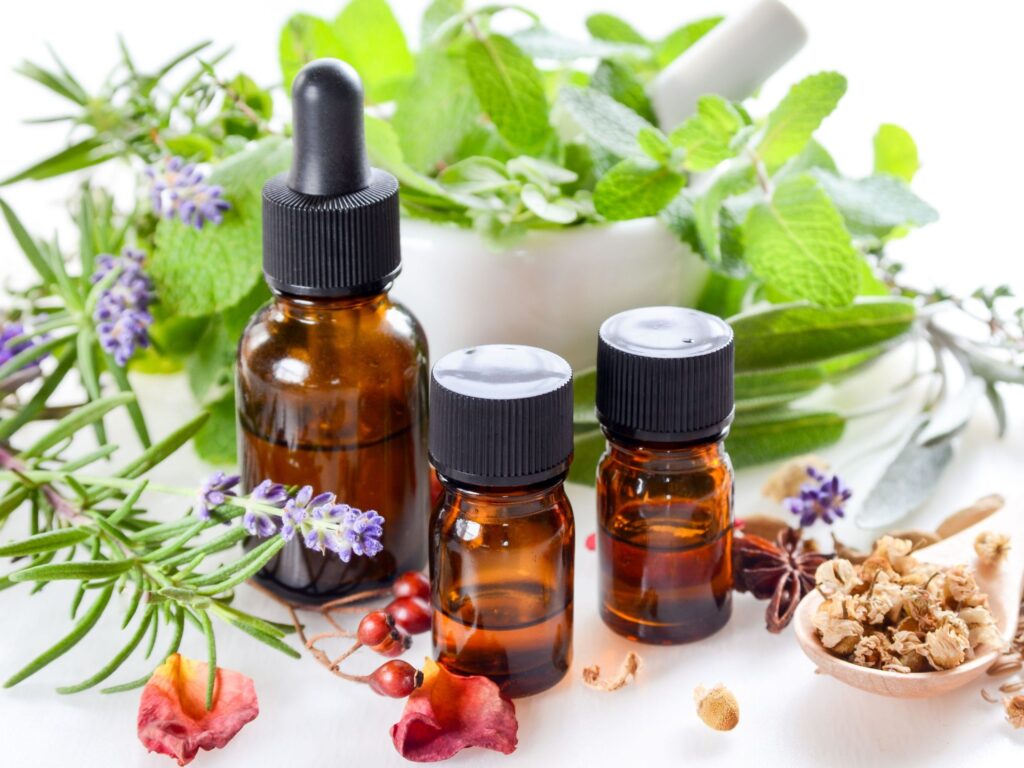
as the use of natural plant oils for health care and therapeutic purposes. It is a type of alternative medicine that is based on aromatic essential oils extracted from plants that are used in healing, even in modalities such as massage, baths, balms, compresses, inhalation and vaporization.
Aromatherapy massage or “aromatouch” involves the passage of complete hands with kneading movements over the body with deep circular movement towards inside. Also, techniques are performed to work on lymphatic drainage by applying specific pressure points leading to elimination of toxins in the bloodstream along with stimulation of the nervous system. Essential oil diffusers may also be used for this purpose.
The history:
Aromatherapy is often considered as a massage therapy, but it can also be done with the use of essential oils. In fact, many countries have already recognized aromatherapy as a viable option for pain relief and to improve quality of life.
Aromatherapy itself has been around since the days of ancient Egyptians who used aromatic oils extracted from plants for embalming process and for other medicinal purposes. Furthermore, modern science began using aromatherapy to treat patients suffering from psychological ailments such as anxiety and depression including those with terminal diseases such as cancer or AIDS. As a result, people all over the world have purchased their own diffusers so they could enjoy the benefits at home or work without having to go to centers.
In spite of this, aromatherapy massage is done by using hands to apply oil with scented plant extract onto the skin of a person. Since it is considered as an alternative medicine, many people need to have first consultation or medical advice on whether they can do aromatherapy on their own first before opting for this treatment option.
What are the benefits?
Aromatherapy massage has its own set of benefits which include: relaxation of muscles, a decrease of anxiety levels, reduction in food cravings, elimination of toxins through sweat glands and detoxification. There are also health benefits associated with chemicals found in essential oils such as vitamins A & C plus minerals like zinc and magnesium. Some may contain anti-inflammatory properties that individuals suffering from arthritis pains while others like rosemary and peppermint may improve concentration and boost energy.
What are some essential oils?
Those who wish to do aromatherapy massage on themselves or others should consider some of the most common essential oils such as: Lavender, Peppermint, Eucalyptus, Lemongrass, Chamomile, Bergamot and Rosemary. These plant extracts help promote relaxation which results in lowering of blood pressure while improving moods. They can also be used for headache pains including migraines plus they aid in the reduction of arthritis symptoms such as cramps plus inflammation. Since they contain anti-bacterial properties particularly eucalyptus and tea tree oil, these plant extracts can be used to treat minor wounds including insect bites and bee stings. However, some of these plant extracts may include ingredients that can be allergenic plus they may worsen asthma problems so people suffering from this condition should avoid using them.
In conclusion:
Aromatherapy massage is a type of alternative medicine that has been used for years in order to promote healing particularly on psychological conditions such as stress, anxiety and depression while providing relaxation. In addition to the essential oils mentioned above, people may also use a carrier oil with scented plant extract in order to provide nourishment on the skin before performing deep pressure point massage that involves circular movements towards the inside to help eliminate toxins within the bloodstream.
WHAT IS DEEP-TISSUE MASSAGE?
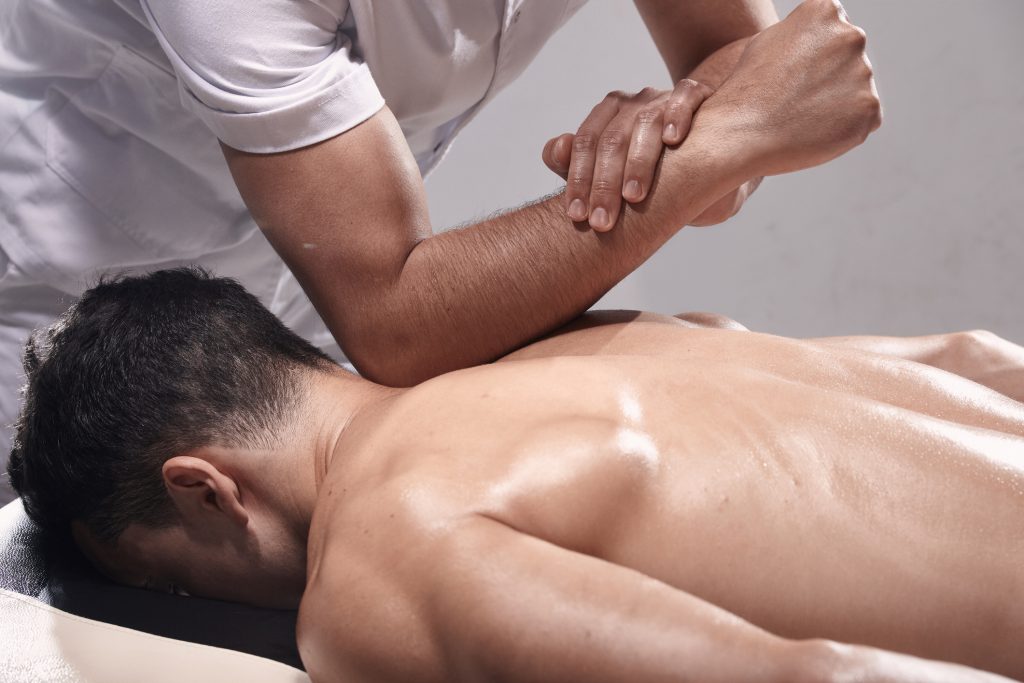
Deep tissue massage is most often described as a more intense massage than what might be considered traditional massage. It addresses the deeper layers of muscles, tendons and fascia (the soft tissue that surrounds muscles, bones and joints). Traditional Swedish or relaxation massage typically works only on the topmost layer of muscles. Deep tissue targets your body’s myofascial system, which lies beneath your skin’s surface. A therapist uses direct pressure with her fingers to work muscle knots out of their taut bands. This can include working the area around joint capsules during certain techniques to release tension in related areas such as bursae sacs or tendons during other movements.
The focus of deep tissue massage is to relieve deep-seated muscle tension or pain that may not reach the surface of the skin. It is called deep tissue because it uses slow, deliberate strokes to reach deeper layers of muscle and fascia (the layer between muscles).
It’s best for people who want a more intense massage than one given with Swedish techniques. Deeper pressure can release chronic tightness in specific areas of your body, helping you feel better overall. Deep tissue massage usually requires some initial discomfort as your therapist works deeply into your muscles, but letting them know how much pressure you can comfortably tolerate helps ensure that you get an appropriate level of stimulation without causing further injury or pain. You’ll remain fully clothed during this massage; oil or lotion isn’t used .
What is the difference between relaxation massage, firm pressure massage and deep tissue massage?
Relaxation massage generally calms you by using lighter pressure. Firm pressure massage also eases stress but works to relieve muscular pain or stiffness caused by conditions such as arthritis or fibromyalgia. On the other hand, deep tissue massage uses slower strokes that penetrate into your deeper muscles and are meant to release tension in your myofascial system. The therapist may use her elbows or knees during this type of massage, so it can be more intense than either Swedish massages or gentle massages.
HOW LONG WILL IT TAKE?
The average full-body deep tissue massage lasts 60 minutes. Depending on the nature of your problem and the depth of your tissues, it may take longer. Some massage therapists recommend a series of massages spaced three to four weeks apart; others say you can benefit from weekly deep tissue sessions.
HOW OFTEN SHOULD I GET A DEEP TISSUE MASSAGE?
Because results depend on the individual and can’t be predicted, it’s best not to rely on deep tissue massage as a one-time solution for chronic pain or instability. Instead, schedule an appointment once or twice a month as part of an ongoing treatment strategy that also includes self-care activities such as stretching and exercise.
WHAT ARE THE BENEFITS OF DEEP TISSUE MASSAGE?
Getting regular deep tissue massage can decrease stress and pain, ease muscle tension and prevent injuries related to repetitive motions or overuse. It can also release endorphins – your body’s natural anti-inflammatory agents that help reduce the pain of chronic conditions such as arthritis and fibromyalgia . Deep tissue massage therapy can help build strength in your deep core muscles, which support your spine and make it easier for you to maintain good posture.
HOW DOES DEEP TISSUE MASSAGE RELATE TO MY BACK PAIN?
Because deep tissue massage addresses muscular tightness at its source, it may provide more lasting relief for musculoskeletal back pain than other forms of massage do .
what is Sports Massage?
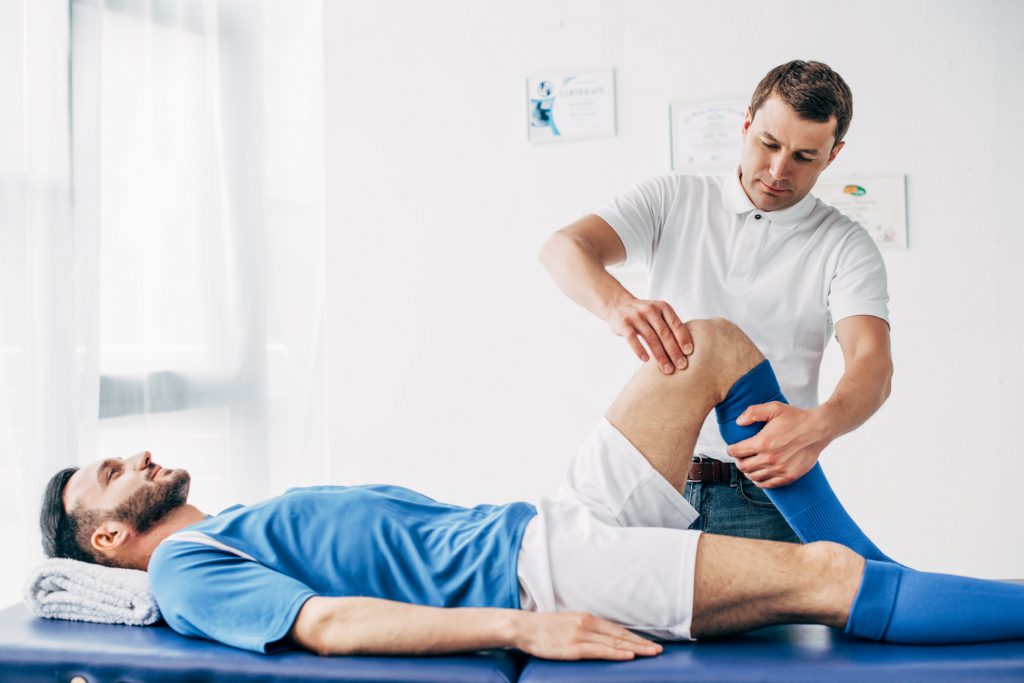
Sports massage therapy is a form of bodywork that encompasses many different techniques. The purpose of sports massage therapy is to improve blood and lymphatic circulation, reduce the effects associated with stress and muscle tension and stimulate the stretch reflexes in a muscle. Sports massage can be used as a supplement to an existing fitness activity or as a way to help you recover between workouts.
Sports massage uses techniques that include stroking, kneading, friction, tapping, compression and joint movements. These techniques are applied over muscles that have been prepared with a preceding session of active isolated stretching (AIS). AIS prepares the muscles for activity by warming them up and elongating the fibres within the muscles themselves. helps connective tissue within the muscles become more pliable, which in turn promotes a better range of motion.
There are four major benefits to sports massage: 1) Improved muscle recovery through enhanced blood flow 2) Reduced muscle and mental tension 3) Relief of chronic aches and pain 4) Enhanced athletic performance
- Improved Muscle Recovery: The use of deep tissue massage techniques has been shown to help repair muscles from strenuous activity by helping to increase circulation, promoting the growth of new cells, removing lactic acid from the muscles, and decreasing body toxins such as uric acid. In addition, a study published in the Journal of Strength & Conditioning Research showed that athletes who received regular sports massage therapy were able to achieve higher power during their workouts. This is most likely a result of the promoted blood flow that enables nutrients and oxygen to reach muscles more quickly.
- Reduced muscle and mental tension: Some studies have shown that massage therapy can have a positive impact on an athlete’s performance through reduced stress levels or increased relaxation. In addition, research has shown that athletes who experience mental stress during competition typically perform below their potential. This is particularly true for athletes who tend to “choke”. A study from McGill University published in the Journal of Applied Physiology found that simply having someone gently touch the skin with a small probe resulted in a significant decrease in anxiety among those experiencing physical or emotional stress. Therefore, regular sports massage may help reduce your level of anxiety before going out on the field which will allow you to play to the best of your abilities.
- Relief of chronic aches and pain: While sports massage is beneficial for athletes, it can also help those with a sedentary job or lifestyle. In fact, multiple research studies have found that in people who sit for long periods of time there is increased tension in their muscles causing them to become tight and stiff. A study in the Journal of Back & Musculoskeletal Rehabilitation showed that when there is increased pressure on the spine from poor posture, an overly contracted muscle known as a trigger point forms right beneath the attachment site. In addition, one study published in Clinical Biomechanics reported that sitting at a computer can cause you to develop neuromuscular problems because prolonged static postures restrict blood flow. This is why it is beneficial to have regular sports massage therapy since it can help reduce the presence of trigger points and improve your range of motion by loosening tight muscles .
- Enhanced Athletic Performance : A study published in the Journal of Strength & Conditioning Research investigated soccer players who received three 30-minute sports massage sessions per week for five weeks prior to their competitive season. The researchers found that those who had received the massages experienced significantly more flexibility immediately after receiving treatment, as well as fifteen minutes after treatment was completed. Another study published in the Journal of Sports Rehabilitation showed that trained athletes were able to jump higher 24 hours after a light sports massage on the hamstrings, hip flexors and quadriceps. Therefore, it might be beneficial to have a sports massage session before a competition since muscles will be more relaxed, allowing them to perform at their best.
In conclusion, having regular sports massage therapy can help athletes recover from strenuous workouts or competitions more quickly, reduce muscle tension and mental stress both during the workout as well as after the workout, provide relief of chronic aches and pain caused by poor posture, improve range of motion which will allow you to achieve higher power outputs during your training sessions, and enhance athletic performance. If you are an athlete who is serious about your game then I highly recommend that you try out regular sports massage therapy. It should definitely make a difference in how you play!
what is Trigger point massage?
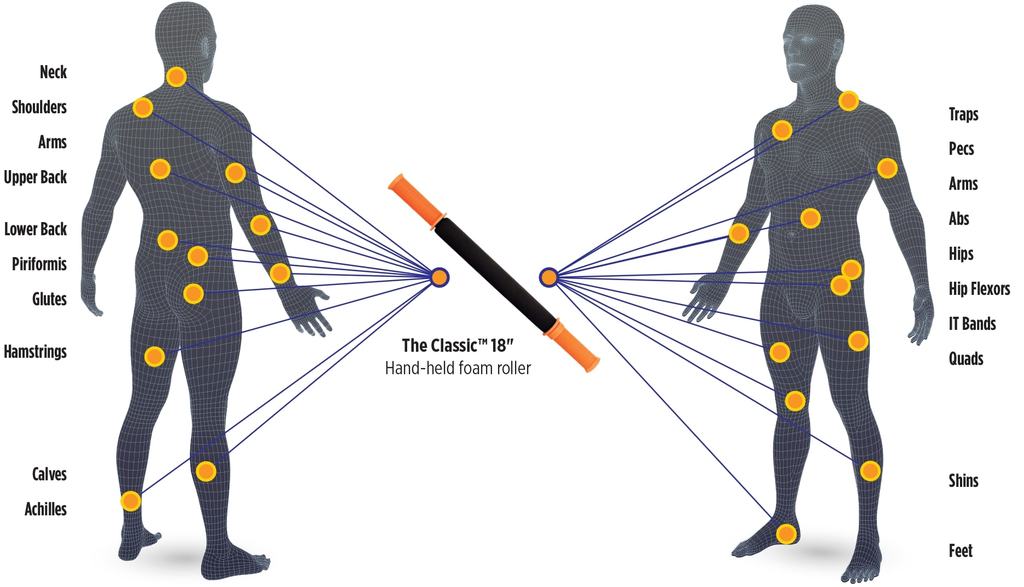
Trigger point massage is a specific type of deep tissue massage that focuses on a localized knot in the muscles called a trigger point. When stimulated, a trigger point can cause referred pain and other symptoms, such as headaches. Trigger points are often caused by overuse or emotional stress, but they also can be caused by illnesses, including arthritis and diabetes. The purpose of trigger point massage is to locate and relieve spasms in these contracted areas using local pressure instead of hands or elbows. Trigger points may exist in different parts within the same muscle, such as along the band-like fibers that surround the circumference (cross section) of skeletal muscle tissue.
According to research published in “The Journal of Alternative and Complementary Medicine”, low level laser therapy (LLLT) has been found to be effective in reducing or ending trigger point pain.
When a trigger point is present in one of the body’s muscles, there is often referred pain, which can cause symptoms in other areas of the body. The diagram below shows common referral patterns for back and neck trigger points.
The most important thing to know about Trigger Point Massage (TP Massage), is that it uses very firm pressure into the muscle fibers against either bone or softer tissue like tendon or another muscle. This type of pressure usually feels uncomfortable, but not painful if done properly. It could be described as feeling like someone pressing their finger extremely hard into your tight, contracted muscles. When you feel this type of pressure you want to relax into it because it will help you release your muscles.
TP Massage is usually done with the client on their back, but can also be done face down if the area being worked on is too sensitive to handle having pressure applied to it. Also, if time or finances are an issue for this client, they may wish to receive TP Massage without any clothes on. This would require less time than trying to remove clothes and could save them money if they do not have many clothes that “need” removal during their sessions.
There are several methods used in Trigger Point Therapy massage. The most common method uses hands or elbows directly into the trigger point which results in soreness after the session only lasting two days . Other methods include using a tool like the Thera Cane, Tiger Ball or back roller to penetrate deep into the muscle. These tools may help reduce time spent by the therapist and possibly increase clients’ comfort level.
Some benefits of Trigger Point Therapy (TP massage) are that hard knots in muscles can be directly targeted and receiving TP Therapy means less sessions because it allows for deeper penetration than other techniques. This causes the person receiving to spend less money overall, which is beneficial to all who pay out of pocket for services received. Also, TP massage has less potential risk since it uses bodies natural ability to heal itself rather than pharmaceuticals.
When there are constantly tight muscles, these muscles will shorten which eventually leads to pain if they are not put at ease. Trigger Point Massage helps break up the tightness in muscles that are causing pain. If there is less pain, then movements can be done easier which means happier people who are healthier overall.
If Trigger Point Massage is not performed at least once a month, your muscles will continue to contract(get tighter) until they fully spasm which could lead to injury if the muscle starts to pull on tendons or ligaments. The reason why it’s important to have these types of massages is because having them breaks down adhesions(shortened/contracted muscles created by overworked tissue), increases blood flow and circulation , aids in returning flexibility back into these tissues allowing for greater movement . For more detailed information about the benefits of massage treatment.
what is Reflexology

Reflexology is an ancient art of healing that is becoming popular once again. Reflexologists believe that there are reflex areas in the feet and hands which correspond to every part of the body, including internal organs. It is possible to relieve certain symptoms by applying pressure to particular points on the hands and feet. In fact, some people find relief from chronic headaches or even stress related disorders without resorting to drugs or surgery. The principles behind both Shiatsu massage and acupuncture are similar to those of reflexology. Like Shiatsu, a form of massage, a reflexologist uses physical manipulation to promote healthy organ functions and general well being by stimulating specific points on the hand or foot while massaging them gently with thumb or finger pressure. A session usually lasts about an hour and in some cases, the reflexologist may apply oil to the hands or feet before they begin.
Reflexology is based on the idea that your body is in a state of good health when all of its organs are in balance. By stimulating specific points on your hand or foot, a Reflexologist can release blockages that are causing problems elsewhere in your body. For instance, if you have a headache , this could be due to pressure on certain points around your head. A reflexologist will work on points on your feet which correspond with the area where you feel pain. This stimulation releases endorphins, causing blood vessels to open up. The nerves get more blood and oxygen sent to them thus helping rid the brain of the pain.
Reflexology can be great for stress management as well. By stimulating the endocrine system, reflexologists believe that they are helping the body to release extra energy which contributes to feelings of stress or anxiety . Reflexology is not meant to replace medical treatment but it may be helpful in some circumstances. If you are seriously ill, a reflexologist will refer you to your doctor before starting any new treatments.
Reflexology is also popular among athletes who want to increase their stamina and improve performance without resorting to drugs and steroids. It has been known to reduce muscle tension and relieve soreness caused by fatigue. Celebrities such as Madonna, Victoria Beckham and Goldie Hawn all swear by this ancient healing art.
There are many cases where reflexology can be effective.
* If you suffer from stomach ulcers, it is believed that there are specific points on the hands and feet that will help to reduce your pain. By stimulating these areas, your body’s production of digestive juices eases allowing the ulcer to heal.
* Sufferers of asthma report that by massaging their hands and fingers, they can feel relief from their symptoms. Once again, stimulating specific points relaxes the muscles around the lungs thus reducing wheezing.
* Reflexology can also help with weight loss as many people find that by working certain areas on their foot or hand, they lose the desire to eat excessively. This helps them to avoid eating junk food (which is full of sugar and fat) thus promoting a healthier lifestyle.
Taking time out for yourself is important for your mental health. Reflexology can be an ideal way to relax, unwind and alleviate stress, especially if you are under pressure at work or simply find it hard to switch off after a long day. If you feel that your body needs some TLC, why not give reflexology a try? It may surprise you just how effective this simple treatment can be!
What is Shiatsu massage?
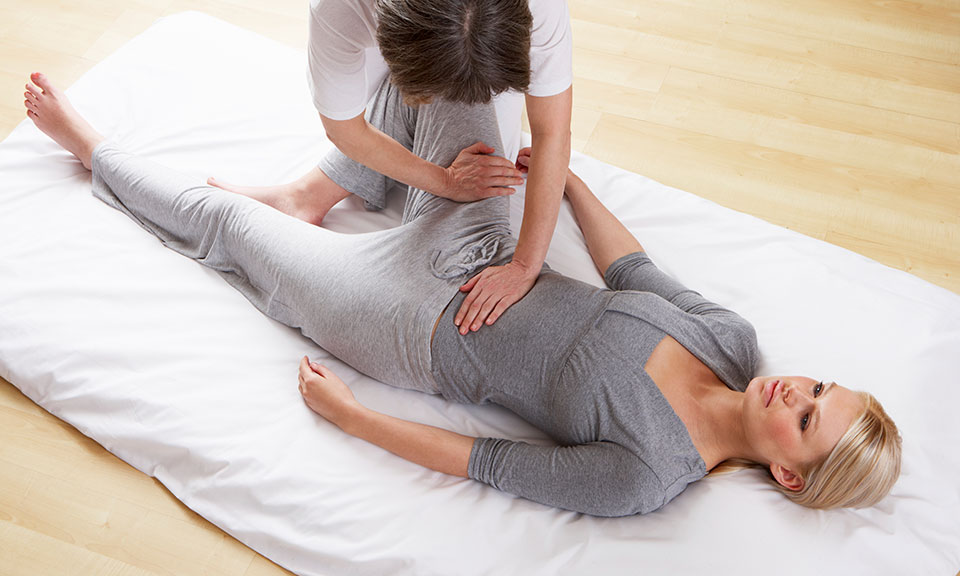
When you think of a massage, what do you imagine? Many people may envision lying on a table as the masseuse rubs lotion onto their body. The receiver lies there for a few minutes before getting up and going about his or her day. However, this isn’t the only type of massage that exists. Shiatsu is a form a Japanese massage that uses finger pressure instead of oil to help relieve pain and tension in muscles and joints.
In basic terms, Shiatsu means finger pressure, but there’s far more to it than hand-to-body contact. There are many different types of Shiatsu massage as well as several techniques used within them.(1) In fact, some say there are no less than forty-eight forms! Here are some of the more popular forms:
- Kumayoshi-ryu – Hundreds of pressure points are stimulated through specific finger, hand and arm motions.(2)
- Shironai-ryu – This form is a bit different from traditional Shiatsu. It uses rotary motion to apply pressure on certain points over the body instead of fingers.(3)
- Aiki-Shiatsu – In this form, use of breath, warmth and voice come into play as well as movements designed to awaken ki energy.(4)
- Healing Touch Shiatsu – This is a form that’s been adapted for Westerners by incorporating Swedish massage techniques into it.(5)
- Ohashiatsu – Created for pregnant women, it involves the use of the elbows and knees to provide enforced stretches. This is believed to help increase blood flow and relax muscles.(6)
It is interesting to note that Ohashiatsu is a form of Shiatsu massage, but not all forms of Shiatsu include Ohashiatsu.
Shiatsu dates back more than 2,500 years in Asian history, especially China and Japan. At that time , bodywork was used for healing injuries caused by weapons such as knives or arrowheads. Although some people credit Chinese General Xi Kang with creating this type of massage during war times , others say it actually began with descendants of African slaves brought to China centuries ago.(7) In contrast, even though some believe Japan’s Emperor Jinmu created Shiatsu massage, others say it came from a teacher who was an immigrant from India.(8)
Regardless of who can really claim ownership, one thing is certain. Both countries have been practicing the art form for years and each has its own style. In fact, the Japanese call their style Karate-Do while the Chinese refer to theirs as Toa-Thai. As a result, there are different types of finger pressure techniques used in both nations.(9)
b>Shiatsu Massage Today
With all this talk about ancient history, you may be surprised to learn that Shiatsu massage isn’t just a thing of the past! Many people continue to receive this type of bodywork. Some enjoy it as a regular part of their health care routine, while others receive it as part of their pain management plan. In fact, some massage therapists specialize in Shiatsu techniques. This type of touch treatment can even be given anywhere on or in the body including hands, feet and ears!(10)
In some cases, a therapist may use both Shiatsu and conventional massage together to provide a more comprehensive approach.
What is thai massage?
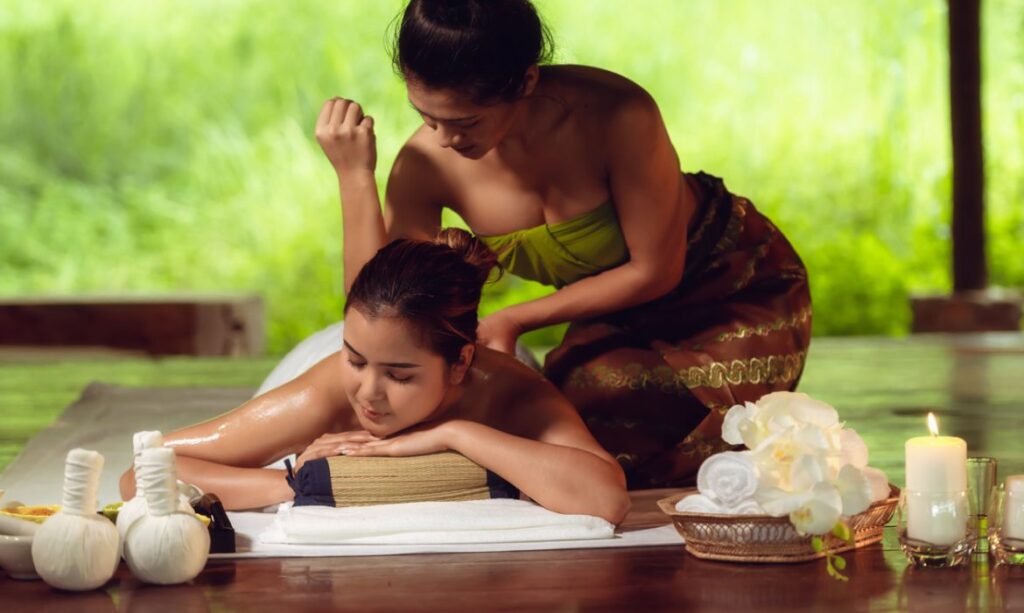
Thai massage is an ancient form of bodywork that originated in India more than 2,500 years ago. It combines acupressure, reflexology, and assisted yoga postures to increase flexibility and improve energy flow throughout the human body. Thai massage uses no oils or lotions; instead, it relies on the natural heat of the body to make tissues more pliable during a one-hour session. Therapists apply their bodies along with gradual, rhythmic pressure to stretch muscles and joints. The benefits may include improved circulation, relief from muscular pain and stiffness, reduced anxiety and enhanced overall well-being when practised regularly over time.
Thai massage can be performed on a mat on the floor or on a massage table. The practitioner may wear loose-fitting clothing or underwear and uses yoga, acupressure, reflexology and assisted yoga postures to provide treatment.
The word “that Thai” in massage comes from the root word “yui”, which means ‘life energy’. It refers to the belief that this type of bodywork balances a person’s life energy with the physical, mental and emotional systems of the body. In Thailand, Thai massage is often performed by traditional practitioners trained at national centers where training is subsidized by the government. Practitioners are certified in either one or both of two styles: “classic” (traditional) and/or “wat po” (energy). Wat Po translates as “pilot light”, which refers to the heat generated in Thai massage.
Thai massage has been practised in America for more than 20 years. It is gaining popularity due to its positive effects on a person’s well-being and health. However, many people are not aware of its risks or how it can affect them when receiving treatment. To help you determine whether Thai massage is right for you, here are six facts about this type of bodywork that you should be aware of before scheduling an appointment with a practitioner.
Thai Massage Uses Many Positions – One hour sessions may include 25–30 minutes each of passive yoga stretching, acupressure using finger pressure on points along energy (sen) lines throughout the body, and assisted yoga postures. Assisted yoga postures include pulling, tractioning, and compression of the body using hands, knees, legs, elbows or feet to induce a stretch that is balanced with body weight. Therapists may use their forearms or elbows to support their client’s back as they move closer toward a stretch that will release tension from stiff joints.
Traditionally Thai massage uses no oils or lotions; instead it relies on the natural heat of the body to make tissues more pliable during a one-hour session. The therapist applies gradual rhythmic pressure to loosen tight muscles and joints and adds stretching movements as the client becomes more relaxed.
After all soft tissue work is completed therapists bring their clients into assisted yoga postures. This part of the session is a transition from therapist-assisted stretching to client-directed yoga postures, which include putting the feet above the heart and pulling one leg up toward the chest for a stretch that will help release tension from stiff neck and shoulders.
Therapists finish with a series of assisted yoga postures designed to further open the body’s energy pathways and enhance overall flexibility. In Thailand it is common to see practitioners walking on hands and knees as they perform assisted poses as part of their massage work, an example being having a client put their foot behind their head to improve hamstring flexibility while working on another area of the body at same time. That would be difficult in Western countries so instead therapists bring their clients into child’s pose or have clients lie on one side with their knees bent to the chest.

No Comments